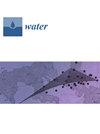Spatial Distribution and Health Risk Assessment of Saline Water Intrusion and Potentially Hazardous Pollutants in a Coastal Groundwater Environment
IF 3
3区 环境科学与生态学
Q2 ENVIRONMENTAL SCIENCES
引用次数: 0
Abstract
In coastal plains, saline water intrusion (SWI) and potentially hazardous pollutants are harmful to local human health. The southern Laizhou Bay has become a typical representative of the northern silty coast due to its extensive silt sedimentation and the significant impact of human activities. This research focuses on a portion of the southern Laizhou Bay, using GIS-based spatial analysis, water quality index methods and health risk assessments to evaluate the impact of saltwater intrusion and potential hazardous pollutants. The results show that the groundwater in the study area is significantly impacted by saline water intrusion, leading to major ion concentrations that far exceed World Health Organization (WHO) standards. The groundwater chemical types of brine and brackish water in the study area are mainly Cl-Na, and the main chemical types of fresh water are HCO3-Ca·Na. The average concentration sequence of the main ions in groundwater is K+ > HCO3− > Cl− > Na+ > SO42− > Ca2+ > Mg2+. The average hazard quotient (HQ) sequence in typical pollutants is Cl− > F− > NO3-N > Se > Mn > NO2-N > Cu > Pb > Zn > Fe, and the carcinogenic risk (CR) sequence caused by carcinogenic heavy metals is Cd > As > Cr. The noncarcinogenic health risk area is mainly distributed in the northwest of the study area, while the potential carcinogenic risk area is in the central region. The Cl is the greatest noncarcinogenic risk to adults and children. The mean HQ values for adults and children were 95.69 and 146.98, indicating a significant noncarcinogenic risk. The mean CR values for adults and children were 0.00037 and 0.00057, suggesting a relatively low carcinogenic risk. SWI is the main influencing factor on human health; therefore, it is necessary to prevent and control SWI. Moreover, potentially hazardous pollutants are carcinogenic and noncarcinogenic risks and are caused by agriculture, industry and other human activities. The findings of this research offer scientific insights for groundwater pollution control and saline water intrusion management in similar coastal areas.沿海地下水环境中盐水入侵和潜在有害污染物的空间分布与健康风险评估
在沿海平原,盐水入侵(SWI)和潜在的有害污染物对当地人类健康造成危害。莱州湾南部因其广泛的淤泥沉积和人类活动的重大影响,已成为北方淤泥质海岸的典型代表。本研究以莱州湾南部部分海域为研究对象,采用基于地理信息系统的空间分析、水质指数法和健康风险评估等方法,对海水入侵和潜在有害污染物的影响进行了评价。结果表明,研究区域的地下水受到盐水入侵的严重影响,导致主要离子浓度远远超过世界卫生组织(WHO)的标准。研究区地下水化学类型中盐水和咸水主要为 Cl-Na,淡水主要为 HCO3-Ca-Na。地下水中主要离子的平均浓度顺序为 K+ > HCO3- > Cl- > Na+ > SO42- > Ca2+ > Mg2+。典型污染物的平均危害商数(HQ)序列为 Cl- > F- > NO3-N > Se > Mn > NO2-N > Cu > Pb > Zn > Fe,致癌重金属的致癌风险(CR)序列为 Cd > As > Cr。非致癌健康风险区主要分布在研究区域的西北部,而潜在致癌风险区则在中部地区。Cl对成人和儿童的非致癌风险最大。成人和儿童的 HQ 平均值分别为 95.69 和 146.98,表明非致癌风险很大。成人和儿童的平均 CR 值分别为 0.00037 和 0.00057,表明致癌风险相对较低。SWI 是影响人类健康的主要因素,因此有必要预防和控制 SWI。此外,潜在有害污染物具有致癌和非致癌风险,是由农业、工业和其他人类活动造成的。本研究的结果为类似沿海地区的地下水污染控制和盐水入侵管理提供了科学依据。
本文章由计算机程序翻译,如有差异,请以英文原文为准。
求助全文
约1分钟内获得全文
求助全文
来源期刊

Water
WATER RESOURCES-
CiteScore
5.80
自引率
14.70%
发文量
3491
审稿时长
19.85 days
期刊介绍:
Water (ISSN 2073-4441) is an international and cross-disciplinary scholarly journal covering all aspects of water including water science and technology, and the hydrology, ecology and management of water resources. It publishes regular research papers, critical reviews and short communications, and there is no restriction on the length of the papers. Our aim is to encourage scientists to publish their experimental and theoretical research in as much detail as possible. Full experimental and/or methodical details must be provided for research articles. Computed data or files regarding the full details of the experimental procedure, if unable to be published in a normal way, can be deposited as supplementary material.
 求助内容:
求助内容: 应助结果提醒方式:
应助结果提醒方式:


